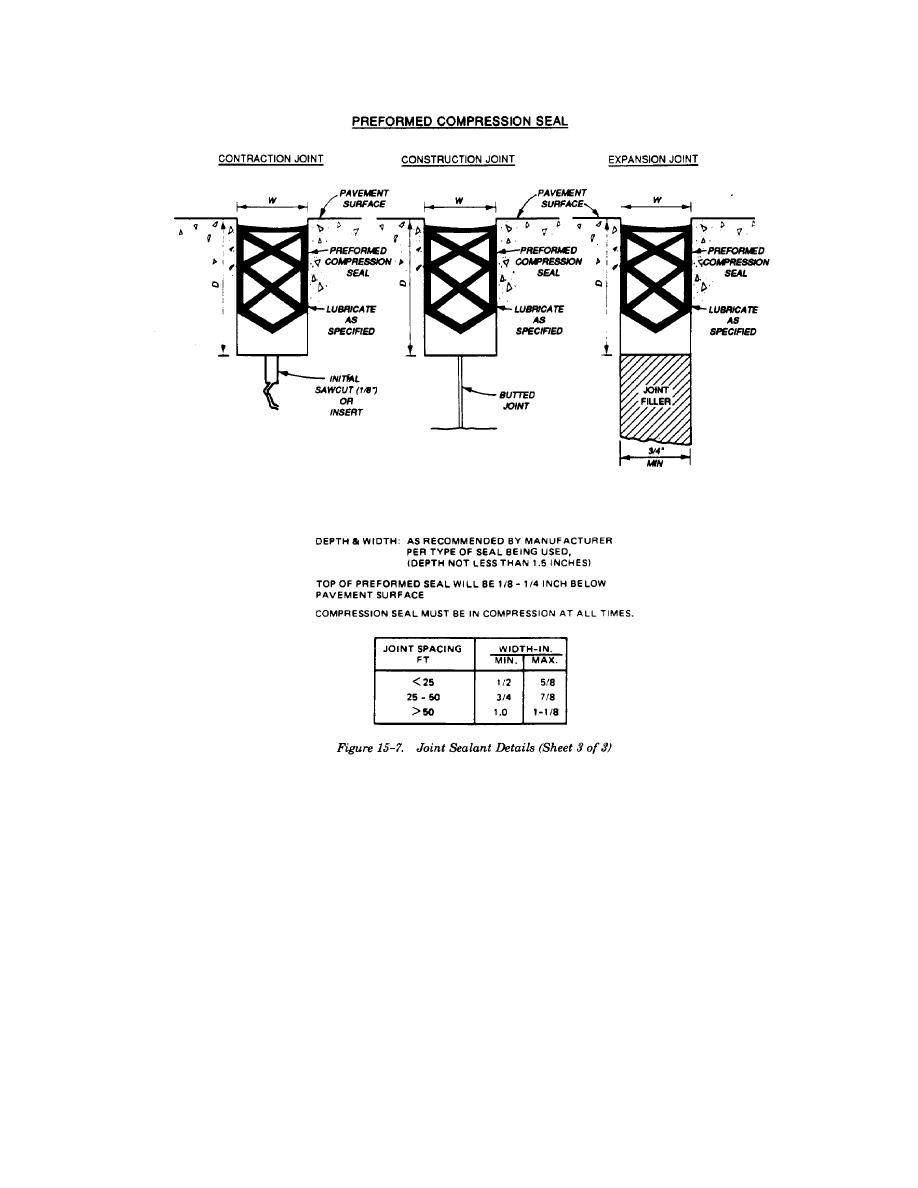
TM 5-822-5/AFM 88-7, Chap. 1
(3) Spacing of transverse contraction joints.
pavement thickness, thermal coefficient and other
Transverse contraction joints will be constructed
characteristics of the aggregate and concrete,
across each paving lane perpendicular to the center
climatic conditions, and foundation restraint. It is
line, at intervals of not less than 12 feet, and
impractical to establish limits on joint spacing that
generally not more than 25 feet (20 feet for Air
are suitable for all conditions without making them
Force). In regions where the design freezing index
unduly restrictive. The joint spacings in table 15-1
is 1,800 or more degree days the maximum spacing
have given satisfactory control of transverse
should be 20 feet. The joint spacing will be uniform
cracking in most instances and should be used as a
throughout any major paved area, and each joint
guide, subject to modification based on available
will be straight and continuous from edge to edge of
information regarding the performance of existing
the paving lane and across all paving lanes for the
pavements in the vicinity or unusual properties of
full width of the paved area. Staggering of joints in
the concrete. For best pavement performance, the
adjacent paving lanes can lead to sympathetic
number of joints should be kept to a minimum by
cracking and will not be permitted unless
using the greatest joint spacing that will
reinforcement is used. The maximum spacing of
satisfactorily control cracking. However, experience
transverse joints that will effectively control
has shown that oblong slabs, especially in thin
cracking will vary appreciably depending on
pavements, tend to crack into smaller slabs of nearly
15-14



 Previous Page
Previous Page
